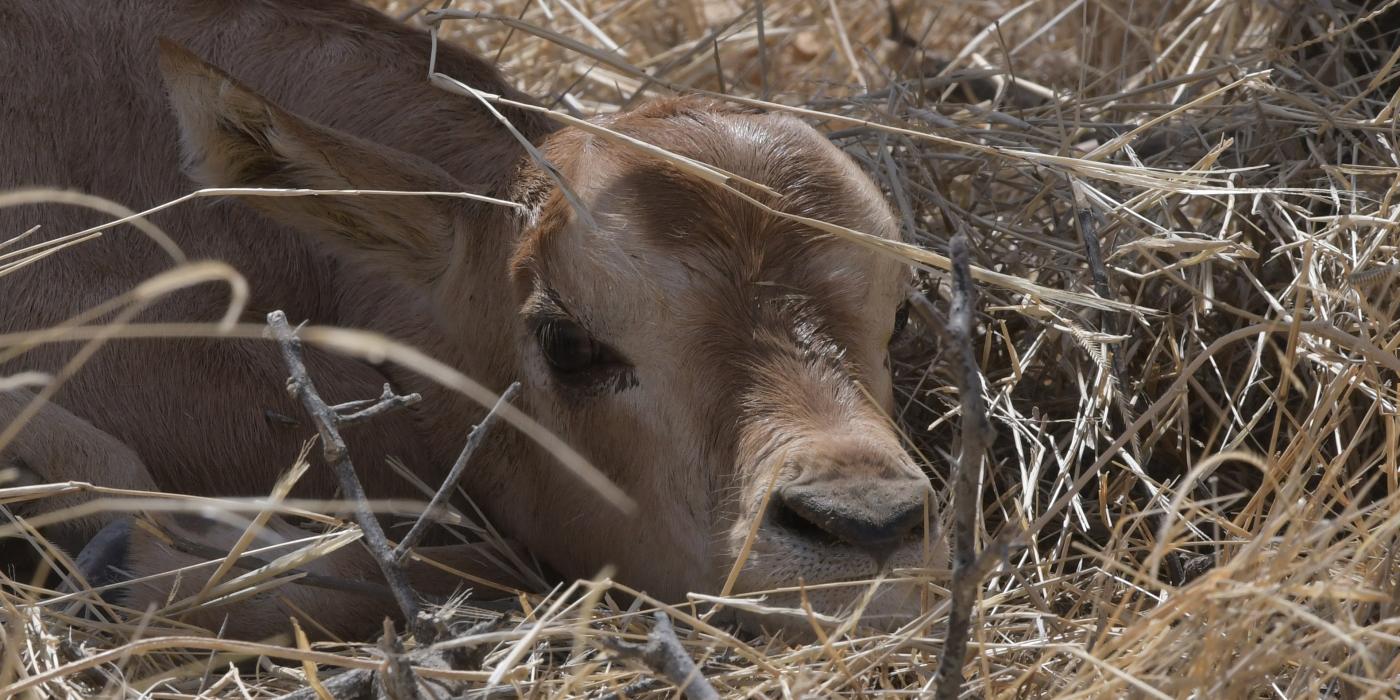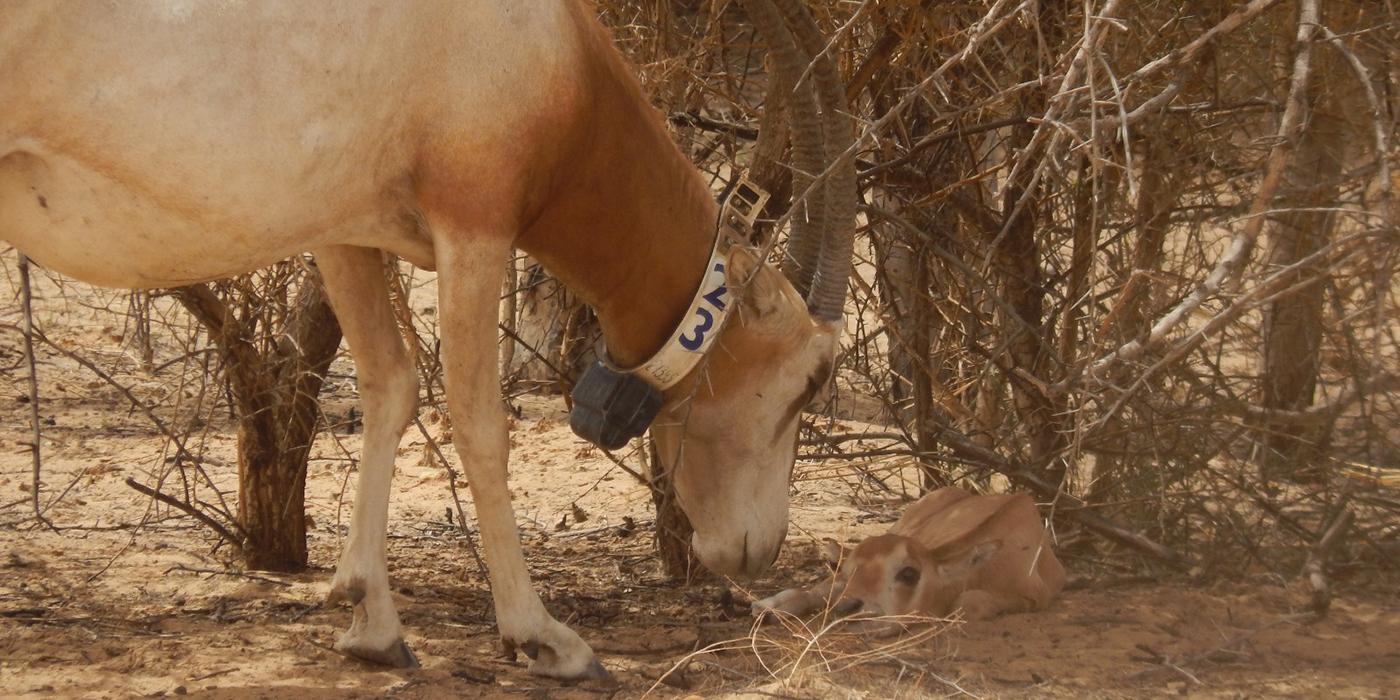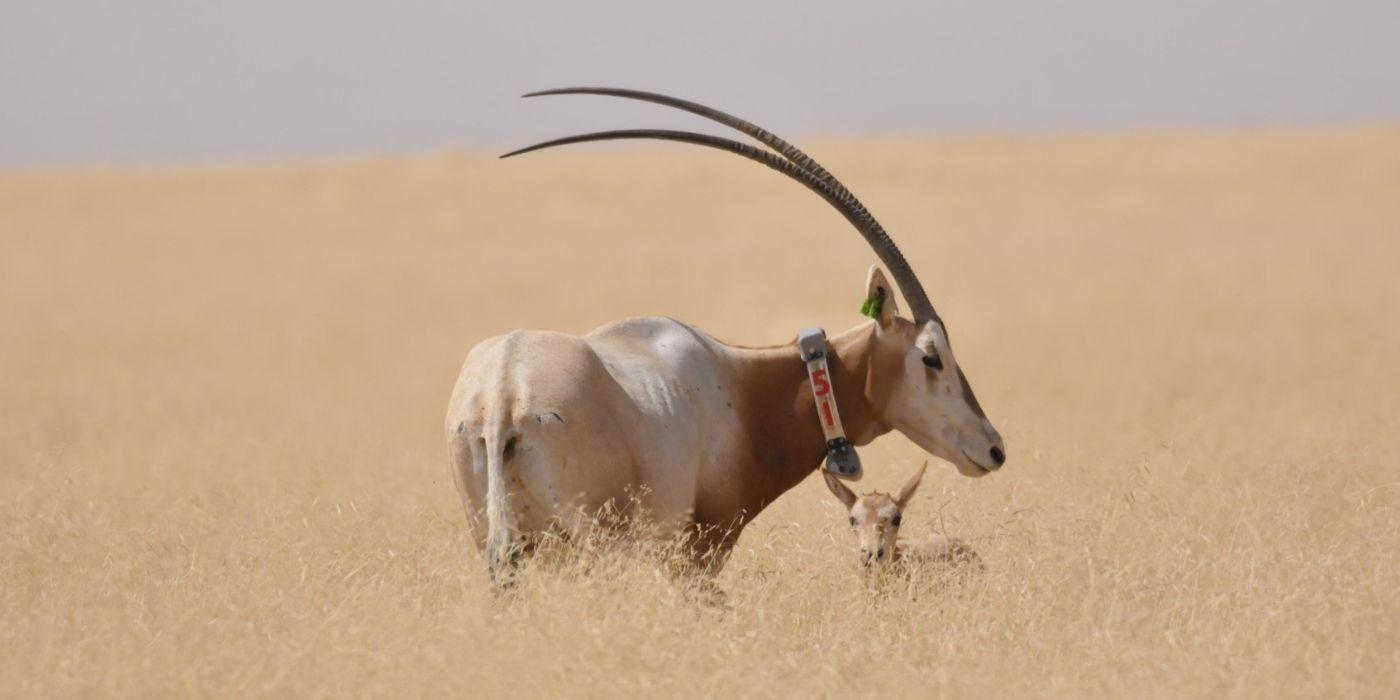Scimitar-horned Oryx Calves Born in the Wild
Update: Third Scimitar-horned Oryx Birth
In late March, a third oryx calf was born in the wild, bringing scientists one step closer to securing a self-sustaining population of wild scimitar-horned oryx.
Second Wild Scimitar-horned Oryx Birth
A second scimitar-horned oryx calf has been born in the wild. The species has been extinct in the wild since the 1980s, but reintroductions led by Environment Agency – Abu Dhabi and the Government of Chad began last year. Smithsonian Conservation Biology Institute ecologists collect behavioral data on the reintroduced oryx from satellite collars.
This new calf is only the second scimitar-horned oryx to be born in the wild in Chad since reintroductions began and marks another milestone for the program. This calf was conceived in Chad after the second group of oryx arrived at the pre-release site at the Ouadi Rime-Ouadi Achim Game Reserve. That differentiates this second calf from the first born last autumn and is indicative that the reintroduced animals have adjusted well and are in good condition.
Thanks to continuous monitoring by the Sahara Conservation Fund and Zoological Society of London field monitoring teams, we have observed that the animals are in good body condition. We aim for a self-sustaining population of oryx throughout the region, and these births are extremely positive and exciting events relevant to reaching this eventual long-term goal.
We suspect a few other animals to be pregnant and continue to monitor all individuals. To date, we have had no mortalities. We are currently monitoring 37 free-ranging/wild oryx in Chad, including the birth of the two calves. An additional 37 animals are being held in our acclimatization enclosure in Chad, awaiting a wet season release in August. These animals will be joined by an additional 25 oryx in July, bringing the total number of free oryx to nearly 100 animals. A 360-degree view of the remote field location can be viewed here.
Related Species:





